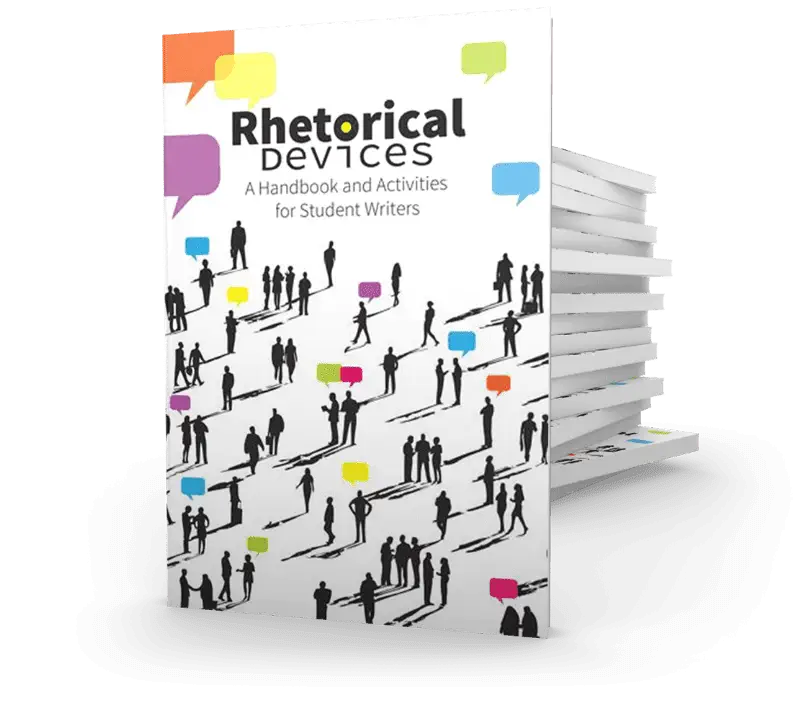Rhetorical devices are like the hidden gems of language, the secret ingredients of writing that add flavor and flair to our words. Some rhetorical devices are everywhere you look—metaphor and simile come to mind—and you know them when you see them. Others are less well known but just as powerful and fun to use.
Here are our top 5 rhetorical devices that aren't household names (but should be).
1. Aporia
Writers use aporia to show that there are multiple sides to a given argument. Aporia lets them express doubt that any of these sides are correct, allowing them to give their opinions without committing themselves to one side.
However, aporia can be used for slightly more nefarious purposes: It can allow the writer to express a personal opinion while feigning ignorance or doubt, and it can help the writer suggest ideas to the reader without taking responsibility for those ideas. Here's an example:
While the Senator’s admitted ties with organized crime and her recent election fraud scandal might tempt some to demand her removal from office, one cannot state with any certainty that…
When your students see aporia in use, they should probably examine the writer's ideas very closely.
2. Chiasmus
Although they’re both organizational rhetorical devices, parallelism and chiasmus achieve different effects.
Parallelism consists of using the same general structure for multiple parts of a sentence. This repetition creates a sense of harmony and often makes the writing easier to read.
On the other hand, the lesser-known chiasmus reverses or crosses elements within a sentence. Using chiasmus helps writers highlight contrasting ideas, create emphasis, or add a sense of balance and symmetry to their text.
Here's a fantastic illustration of the difference between parallelism and chiasmus:
Hyperbole for entertainment, metaphor for clarity, sententia for panache, and parallelism for reassuring consistency.
Hyperbole for entertainment, metaphor for clarity, sententia for panache, and—for delightful surprise—chiasmus.
Look how fun chiasmus is!
The last item in a sentence that uses chiasmus will have its structure reversed from the items that came before it. This adds a bit of playful flair to your writing and can surprise the reader and keep them alert.
3. Metonymy
Metonymy is an interesting case, and one that's a little tough to describe.
To use metonymy, think of an object that is closely related to another object, group, country, etc. (for example: Wall Street and the financial industry; Main Street and the general public). Then, use the first object to refer to the second.
“Wall Street responded positively to news of the economic stimulus package, driving stock prices higher.”
In the above sentence, "Wall Street" does not refer to the actual street in New York (a street, of course, would have no use for money) but instead the financial and economic industry as a whole.
Here are a couple more examples:
Metonymy allows you to refer to something closely related to the actual object, and use that as a way of referring to the object itself.
The White House, the residence of the President, can be used to represent the President and his or her staff. Neither the pen nor the sword have any “might,” but they can represent the persons who wield them, and what those people do.
4. Anaphora/Epistrophe/Symploce
Okay, this one's cheating a bit, but we had to get these three in—and they're closely related. Anaphora, epistrophe, and symploce all involve the repetition of words or phrases for emphasis and effect.
When you use anaphora, you repeat a word or phrase at the beginning of successive clauses or sentences.
When you use epistrophe, you repeat the same word or phrase at the end of successive clauses or sentences.
When you use symploce, you repeat the same words or phrases at both the beginning and end of successive clauses or sentences.
Here's another illustration:
Use anaphora and epistrophe for style.
Use anaphora and epistrophe for emphasis.
Use anaphora and epistrophe for clarity.
But use anaphora.
Symploce repeats words and phrases as do anaphora and epistrophe; symploce improves style and clarity as do anaphora and epistrophe.
5. Zeugma
When you use the one word or phrase to join two seemingly unrelated ideas, you're using zeugma.
This is our favorite obscure rhetorical device for a couple of reasons. First, it's really cool. When used well, zeugma is one of the most shocking and delightful rhetorical devices there is.
Second, zeugma is tough to use. Finding the right word or phrase to join your two ideas can be challenging. Here are a couple examples:
The man ran a hundred miles, but out of time.
The performer and the spotlight faded on the stage.
When used sparingly, zeugma is a great tool for grabbing attention. It's powerful and clever, and it definitely deserves the #1 spot.
If you want to challenge your students to use more creativity in their writing, introducing them to these uncommon rhetorical devices is just the beginning! Rhetorical Devices offers a comprehensive study of more than 30 different rhetorical devices and literary techniques, including explanations of the devices, exercises on identifying and using them, and more.

See Rhetorical Devices in Action
An excellent resource for AP* Language and Composition classes, Rhetorical Devices gives your high school students the tools they need to make lively arguments that really pack a punch.
All examples taken from the Prestwick House Rhetorical Devices PowerPoint for the Classroom PowerPresentation.
* Advanced Placement, AP, and the Advanced Placement Program are registered trademarks of the College Board, which was not involved in the production of, and does not endorse, these products.